
cd_nom
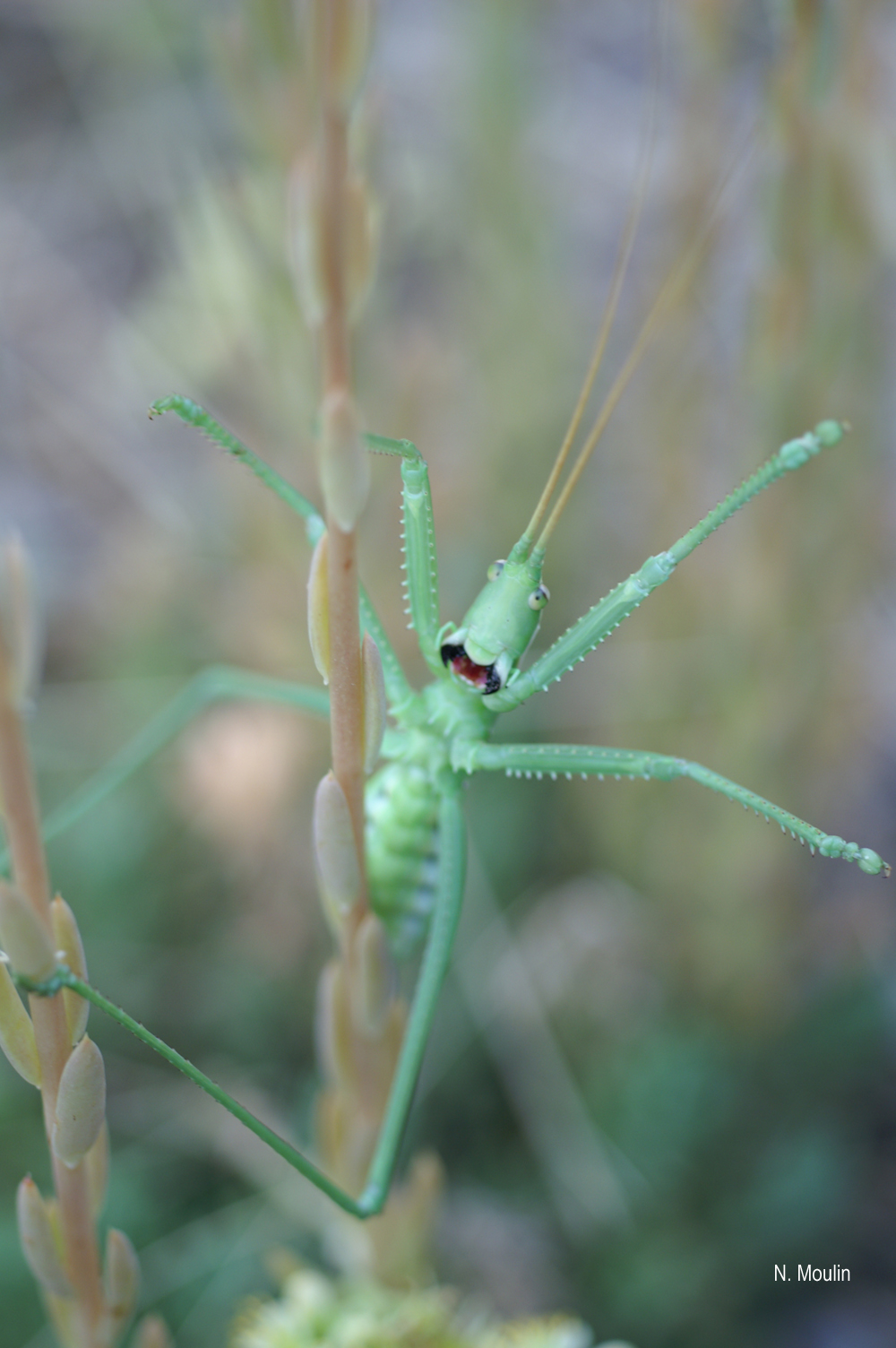
| Author : N. Moulin |
 |
To get the picture, please visit:
Nicolas Moulin Entomologiste
Mach 6 - Horizon 2000
Avenue des Hauts Grigneux
76230 Bihorel
nmentomo@gmail.com / www.nmentomo.fr
Any reuse of one or more photographs on this site is subject to an authorization request from the author.
Link to the Code of Intellectual Property (Legifrance)

| Author : N. Moulin |
 |
To get the picture, please visit:
Nicolas Moulin Entomologiste
Mach 6 - Horizon 2000
Avenue des Hauts Grigneux
76230 Bihorel
nmentomo@gmail.com / www.nmentomo.fr
Any reuse of one or more photographs on this site is subject to an authorization request from the author.
Link to the Code of Intellectual Property (Legifrance)
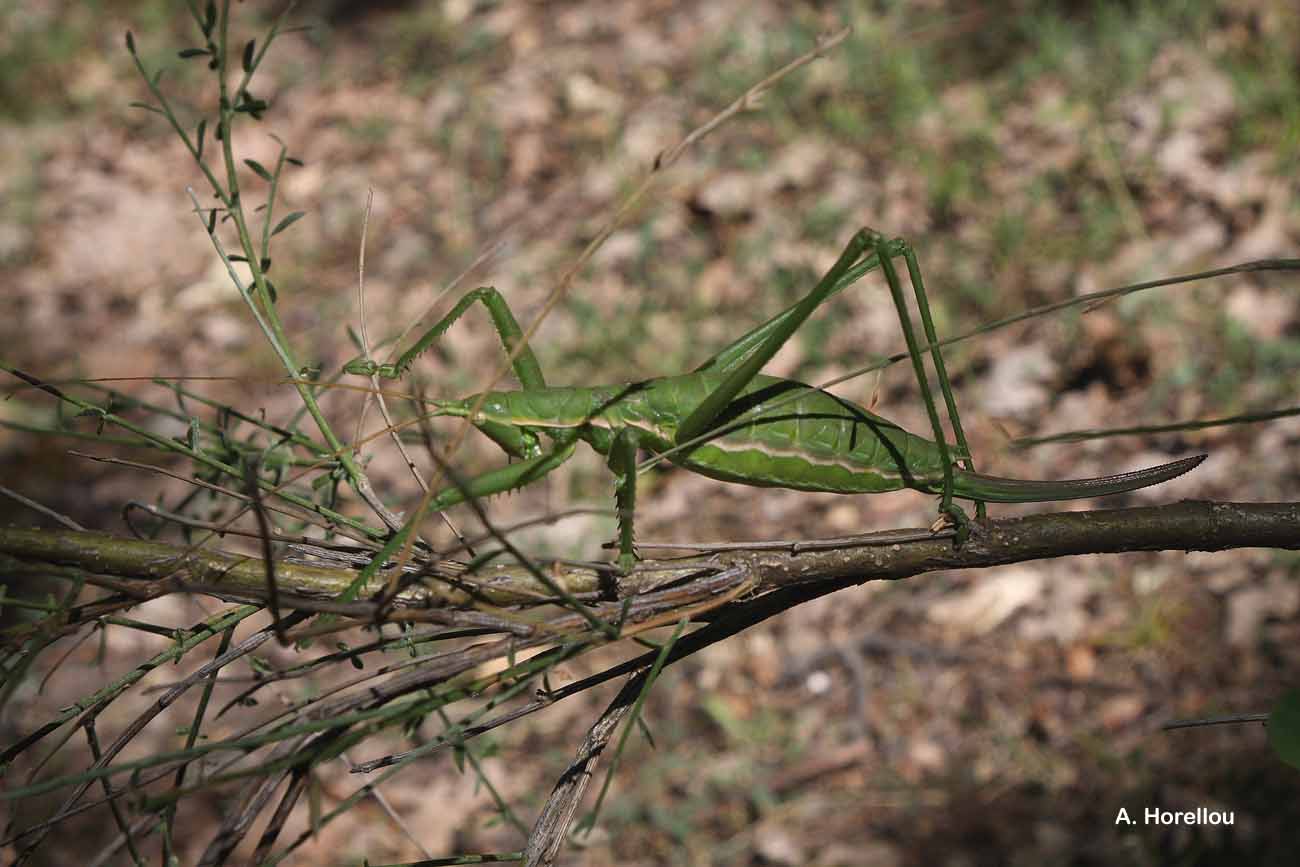
| Author : A. Horellou |
 |
To get the picture, please visit:
Arnaud HORELLOU
Muséum national d'Histoire naturelle - Service du Patrimoine Naturel
36 rue Geoffroy Saint-Hilaire
CP 41
75 231 PARIS CEDEX 05
e-mail : inpn@mnhn.fr
Legend: Dignes - 18/07/2010
Despite the Creative Commons license, please inform the author of the use which will be made of his photo

| Author : J. LAIGNEL |
 |
To get the picture, please visit:
Julien Laignel
Chargé de mission SNB - UMS2006-PATRINAT/MNHN
4, avenue du Petit Château
91800 BRUNOY
Tel.: 06.10.68.23.36
Mail: julien.laignel@9online.fr
Despite the Creative Commons license, please inform the author of the use which will be made of his photo
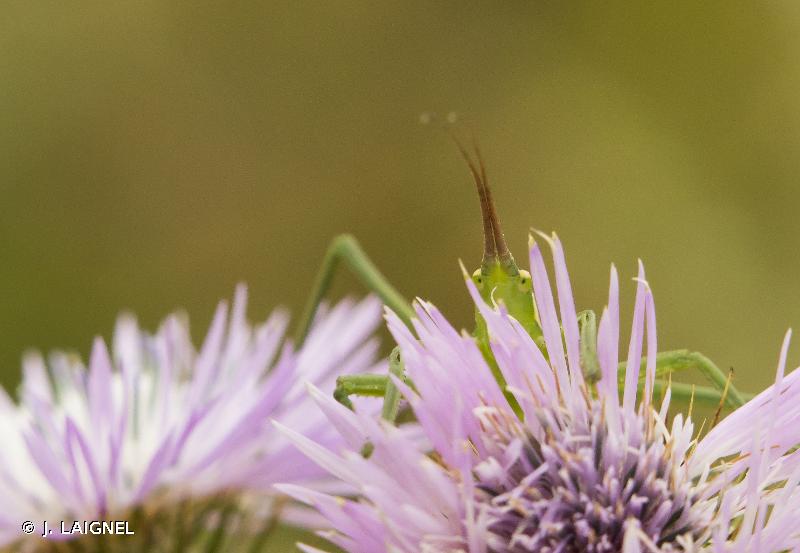
| Author : J. LAIGNEL |
 |
To get the picture, please visit:
Julien Laignel
Chargé de mission SNB - UMS2006-PATRINAT/MNHN
4, avenue du Petit Château
91800 BRUNOY
Tel.: 06.10.68.23.36
Mail: julien.laignel@9online.fr
Despite the Creative Commons license, please inform the author of the use which will be made of his photo
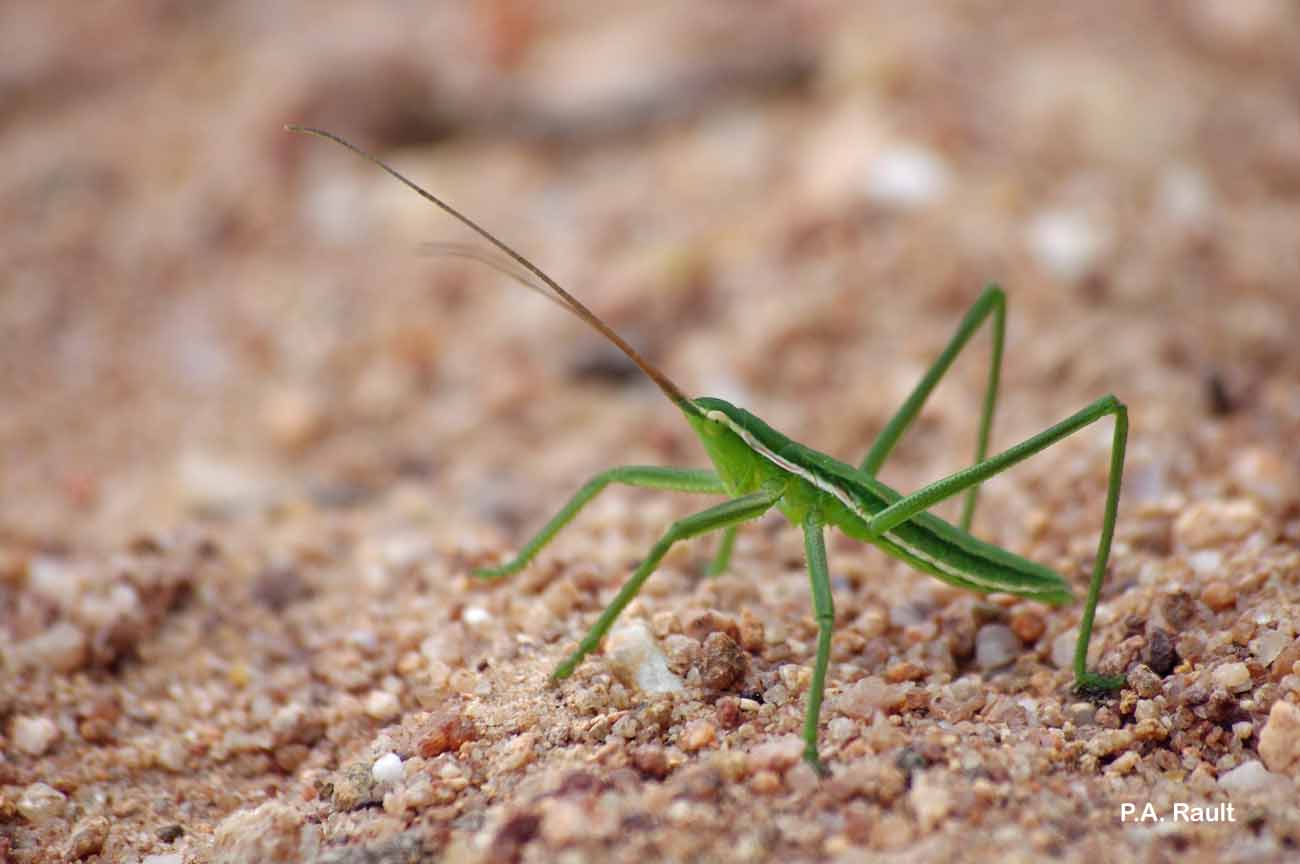
| Author : P.A. Rault |
 |
To get the picture, please visit:
Pierre Alexis RAULT
Muséum national d'Histoire naturelle - Service du Patrimoine Naturel
4 avenue du petit château
91 800 BRUNOY
e-mail : parault@mnhn.fr
Legend: Larve - Domaine de Bouis (FEGVE)
Any reuse of one or more photographs on this site is subject to an authorization request from the author.
Link to the Code of Intellectual Property (Legifrance)
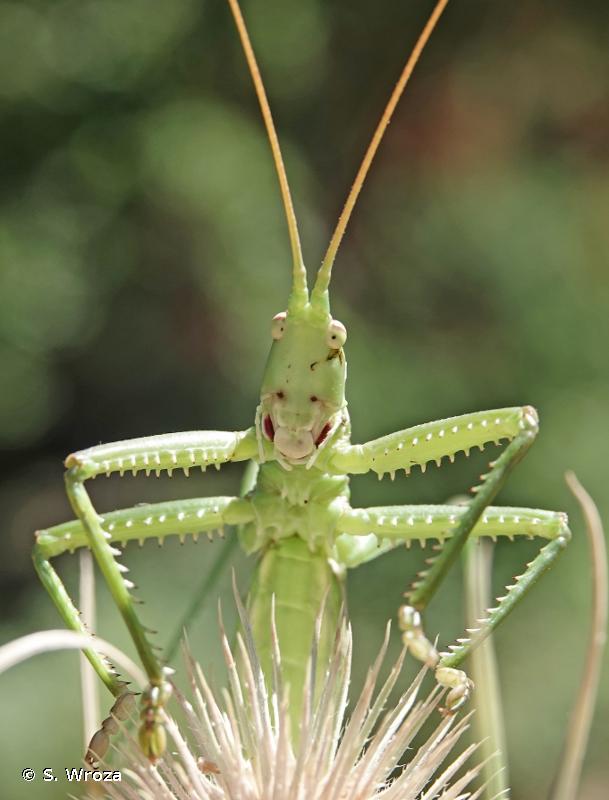
| Author : S. Wroza |
 |
Despite the Creative Commons license, please inform the author of the use which will be made of his photo

| Author : S. Wroza |
 |
Despite the Creative Commons license, please inform the author of the use which will be made of his photo
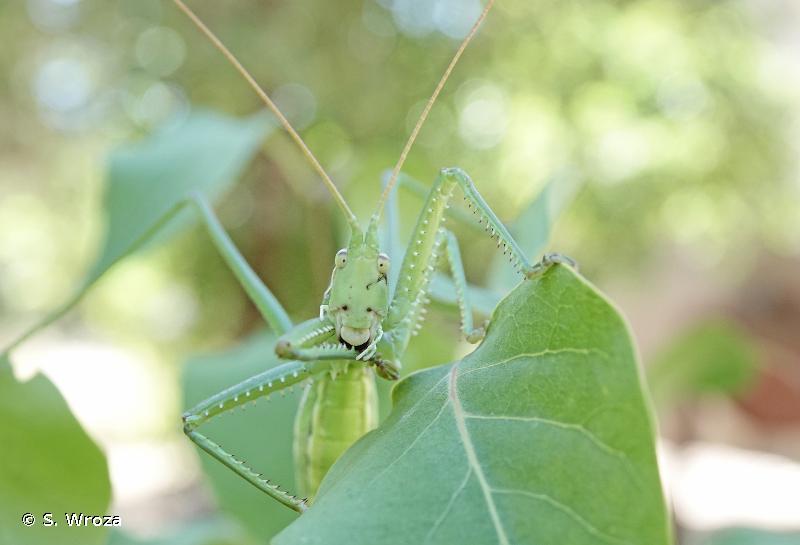
| Author : S. Wroza |
 |
Despite the Creative Commons license, please inform the author of the use which will be made of his photo

| Author : S. Wroza |
 |
Despite the Creative Commons license, please inform the author of the use which will be made of his photo

| Author : S. Wroza |
 |
Despite the Creative Commons license, please inform the author of the use which will be made of his photo

| Author : S. Wroza |
 |
Despite the Creative Commons license, please inform the author of the use which will be made of his photo
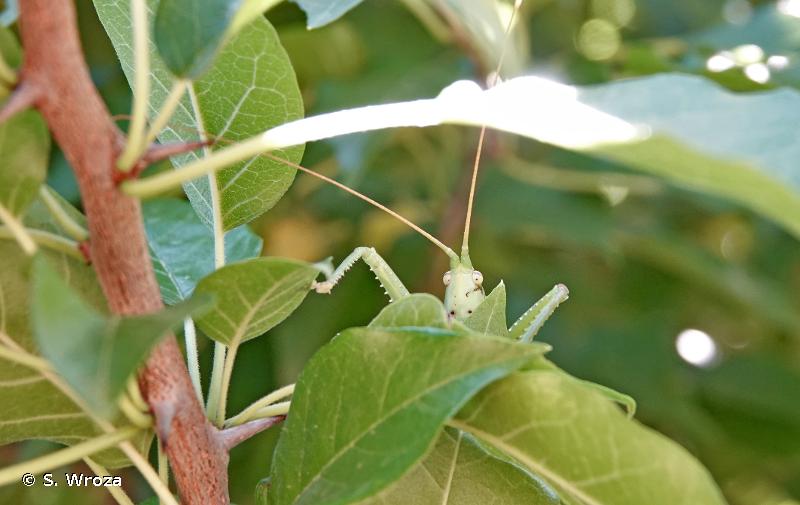
| Author : S. Wroza |
 |
Despite the Creative Commons license, please inform the author of the use which will be made of his photo

| Author : S. Wroza |
 |
Despite the Creative Commons license, please inform the author of the use which will be made of his photo
Taille/poids :
Mesure entre 61 et 67 mm sans l'oviscapte (34-45 mm). C'est le plus grand Orthoptère d'Europe.
Diagnose :
Adultes verts avec des bandes latérales blanc rosé de la base des antennes jusqu'à l'oviscapte. Il existe une forme grise, un peu violacée à bandes latérales jaune pâle.
Détermination :
Simple. L'espèce peut facilement être déterminée avec une photo.
Espèces proches :
Aucune confusion possible.
Période d'observation :
Adultes observés de début juillet à septembre. Les larves peuvent être observées à la fin du printemps.
Biologie-ethologie :
Insectivore, S. pedo se nourrit principalement de petits Orthoptères. Son activité est essentiellement nocturne mais on l'observe aussi en journée, par temps nuageux ou frais et en automne. L'espèce est tétraploïde et se reproduit par parthénogénèse, de ce fait seules des femelles sont observées. La ponte se fait par terre, généralement au milieu de la journée. Plusieurs œufs cylindriques, d'un centimètre de long sur 3 mm, sont déposés à chaque ponte. L'éclosion a lieu lors de la première quinzaine de mai, après au moins deux hivers. Il y a huit mues larvaire.
Biogéographique et écologie :
Espèce méditerranéenne et orientale. Elle se retrouve du Portugal jusqu'en Sibérie occidentale. S. pedo est réputé rare,peut-être à tord. Il vit dans les garrigues, préférentiellement en plaine mais peut être trouvé jusqu'à 1700 mètres dans les régions favorables. On le trouve au sol ou sur les buissons.
Bibliographie :
Baur B., Baur H., Roesti C., Roesti D., Thorens P., 206. Sauterelles, Grillons et Criquets de Suisse ; Haupt, Berne, 352 pp.
Bellmann H., Luquet G., 2009. Guide des sauterelles, grillons et criquets d'Europe occidentale. Delachaux et Niestlé, Paris, 383 pp.
Chopard L., 1951. Orthoptéroïdes.Collection Faune de France – 56. Paul Lechevalier, Paris, 359 pp.
Voisin J.-F. (coord.), 2003. Atlas des Orthoptères (Insecta : Orthoptera) et des Mantides (Insecte : Mantodea) de France. Patrimoines Naturels, 60 : 104 pp.
Braud J.(ASCETE),2014
Continental
Metropolitan France
Overseas
Marine
Metropolitan France
Overseas
The map presents a summary at the 10 x 10 km grid of the observation data for the species transmitted to the SINP. These data have been subjected to validation filters.
The map presents a reference distribution layer of the species at the scale of departments and marine sectors. The presence and absence data were established by expertise within a network of partners. This reference distribution is used in the validation process of the SINP data at the INPN level.
Corresponds to a report on the basis of at least one observation proved within a period of 10 years (20 years for little-known invertebrates) preceding the year and no presumption of extinction since obtaining the last data nor doubt on reproductive and implemented nature of this population. For migratory species, the presence indicated concerns areas of reproduction.
This status is based on one or more of the following criteria:
This point covers the absence, more difficult by nature to demonstrate than presence. This status is based on one or more of the following criteria:
This status must be assigned to a department in which the presence of the species is casual.
Particular case of absence due to a proven extinction less than a half century ago (older disappearances are treated as "no probable or definite").
In the state of knowledge, we can not comment on the presence or absence in the current department. This is the default status when not comprised in one of the previous categories or whenever there is doubt.
The map shows the global distribution of the species based on GBIF data (Global Biodiversity Information Facility).
